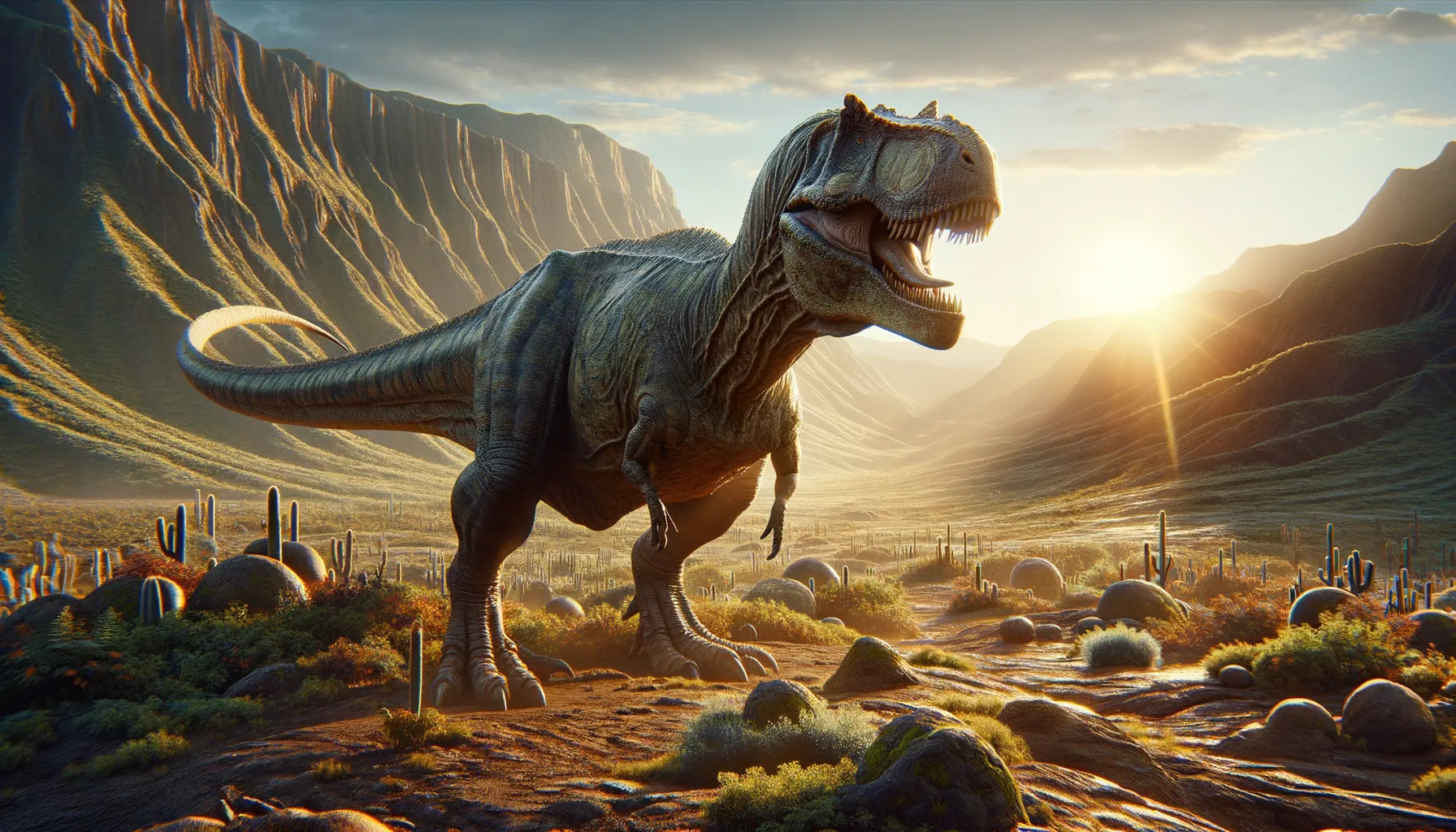
Bruhathkayosaurus
Colossal titan from the Cretaceous wild.
Period
Cretaceous
Length
Possibly exceeded 30 meters.
Height
Roughly 15 meters at shoulder height.
Weight
Estimates suggest over 100 tons.
Bruhathkayosaurus is a dinosaur believed to have been one of the largest ever to roam the Earth. Originating from the Late Cretaceous period, its remains were discovered in India. Due to its massive size, accurate estimates of its dimensions are contentious, but it likely rivaled or exceeded the Argentinosaurus. Little is known due to the limited fossil evidence available.
Diet
As a herbivore, it likely fed on a vast array of plant material. It might have consumed leaves, ferns, and other vegetation found in its environment. Its sheer size suggests it needed vast amounts of food daily.
Hunting
Bruhathkayosaurus did not hunt other animals since it was a plant-eater. It possibly foraged for food using its long neck to reach branches high in trees. Its massive body ensured it could move through different vegetation layers easily.
Environmental challenges
The Late Cretaceous period was a time of significant environmental shifts. Changes in climate and sea levels could have impacted its habitat and food sources. Its size may have provided some resilience against predators but would require large feeding grounds to sustain itself. The drastic changes in its environment could have played a role in its eventual extinction.
Speed
Slow-moving due to its massive size.
Lifespan
Lived up to several decades like other large sauropods.
First discovery
Discovered in India in the 1980s.
Fun Facts
- Bruhathkayosaurus was a gigantic dinosaur believed to have lived during the Late Cretaceous period in what is now India.
- This dinosaur's name, Bruhathkayosaurus, comes from Sanskrit, meaning 'huge-bodied lizard', hinting at its enormous size.
- Estimates suggested that Bruhathkayosaurus might have been one of the largest dinosaurs, with some claims of it being over 100 feet long, though this is still debated among scientists.
- The remains of Bruhathkayosaurus were found in India in the 1980s; however, they were not well preserved, which makes its exact size and appearance uncertain.
- There is ongoing debate about whether Bruhathkayosaurus was really an enormous dinosaur or if its remains were incorrectly identified and belonged to another species.
- Bruhathkayosaurus helps paleontologists learn more about the diverse types of giant sauropod dinosaurs that once roamed the Earth.
Growth and Development
The dinosaur likely experienced a slow growth rate over many years. As with other massive sauropods, reaching full size would have taken decades. Its long lifespan suggests a lengthy development period involving changes in diet and growth demands. Juveniles might have been more vulnerable to predators compared to adults.
Habitat
Bruhathkayosaurus inhabited lush, vegetative areas rich in plant life. It may have roamed woodlands and open plains, where food was plentiful. The environment would need to support such large creatures through favorable climatic conditions. Proximity to water sources would likely have been essential for sustaining its needs.
Interaction with other species
Living among other dinosaur species, it likely had little competition due to its size. It may have coexisted alongside other herbivores, sharing feeding grounds. Predators might have rarely targeted adult Bruhathkayosaurus but could have posed threats to juveniles. Its presence likely influenced the ecosystem dynamics significantly.
Natural lifespan
It naturally lived for several decades, akin to other large dinosaurs.
Reproduction
Repping typically involved laying eggs, similar to other dinosaurs. Nests might have been dug in soil or vegetation to safeguard the eggs. The sheer size of adults may have provided a deterrent against predators targeting the nests. Parental care post-hatching remains uncertain without direct evidence.
Social behaviour
It may have traveled in herds or groups for protection. Communal living would aid young ones, offering some defense against predators. Interaction among members might have involved communication through sounds or movements. Social dynamics are difficult to ascertain due to the limited fossil record.
Fossil locations
Fossils of this dinosaur were primarily found in India. However, the validity of the fossils and the exact size estimates have been debated. Challenges include incomplete remains and preservation issues limiting detailed analysis. Existing fossils provide valuable, albeit sparse, glimpses into its past.
